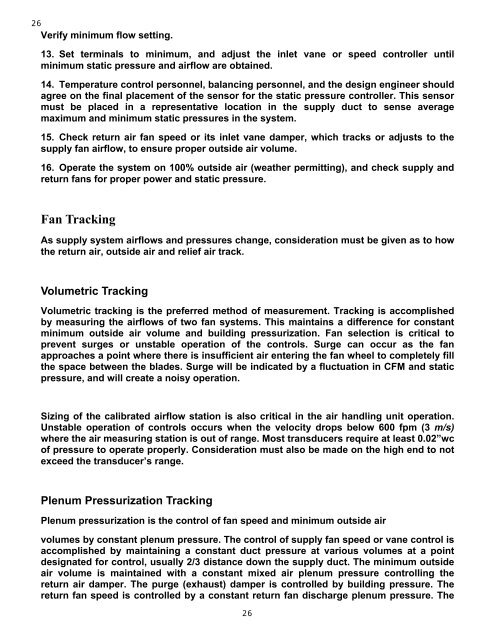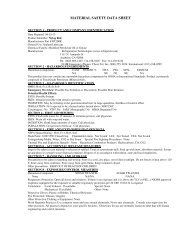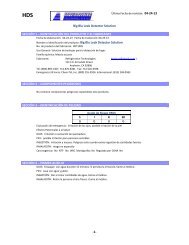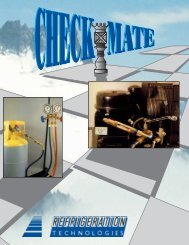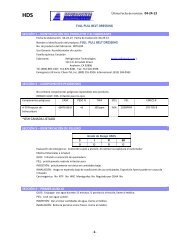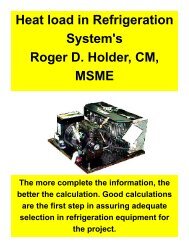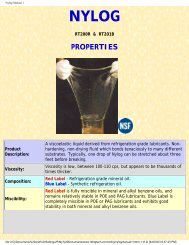Balancing of a Water and Air System (PDF
Balancing of a Water and Air System (PDF
Balancing of a Water and Air System (PDF
Create successful ePaper yourself
Turn your PDF publications into a flip-book with our unique Google optimized e-Paper software.
26<br />
Verify minimum flow setting.<br />
13. Set terminals to minimum, <strong>and</strong> adjust the inlet vane or speed controller until<br />
minimum static pressure <strong>and</strong> airflow are obtained.<br />
14. Temperature control personnel, balancing personnel, <strong>and</strong> the design engineer should<br />
agree on the final placement <strong>of</strong> the sensor for the static pressure controller. This sensor<br />
must be placed in a representative location in the supply duct to sense average<br />
maximum <strong>and</strong> minimum static pressures in the system.<br />
15. Check return air fan speed or its inlet vane damper, which tracks or adjusts to the<br />
supply fan airflow, to ensure proper outside air volume.<br />
16. Operate the system on 100% outside air (weather permitting), <strong>and</strong> check supply <strong>and</strong><br />
return fans for proper power <strong>and</strong> static pressure.<br />
Fan Tracking<br />
As supply system airflows <strong>and</strong> pressures change, consideration must be given as to how<br />
the return air, outside air <strong>and</strong> relief air track.<br />
Volumetric Tracking<br />
Volumetric tracking is the preferred method <strong>of</strong> measurement. Tracking is accomplished<br />
by measuring the airflows <strong>of</strong> two fan systems. This maintains a difference for constant<br />
minimum outside air volume <strong>and</strong> building pressurization. Fan selection is critical to<br />
prevent surges or unstable operation <strong>of</strong> the controls. Surge can occur as the fan<br />
approaches a point where there is insufficient air entering the fan wheel to completely fill<br />
the space between the blades. Surge will be indicated by a fluctuation in CFM <strong>and</strong> static<br />
pressure, <strong>and</strong> will create a noisy operation.<br />
Sizing <strong>of</strong> the calibrated airflow station is also critical in the air h<strong>and</strong>ling unit operation.<br />
Unstable operation <strong>of</strong> controls occurs when the velocity drops below 600 fpm (3 m/s)<br />
where the air measuring station is out <strong>of</strong> range. Most transducers require at least 0.02”wc<br />
<strong>of</strong> pressure to operate properly. Consideration must also be made on the high end to not<br />
exceed the transducer’s range.<br />
Plenum Pressurization Tracking<br />
Plenum pressurization is the control <strong>of</strong> fan speed <strong>and</strong> minimum outside air<br />
volumes by constant plenum pressure. The control <strong>of</strong> supply fan speed or vane control is<br />
accomplished by maintaining a constant duct pressure at various volumes at a point<br />
designated for control, usually 2/3 distance down the supply duct. The minimum outside<br />
air volume is maintained with a constant mixed air plenum pressure controlling the<br />
return air damper. The purge (exhaust) damper is controlled by building pressure. The<br />
return fan speed is controlled by a constant return fan discharge plenum pressure. The<br />
26


